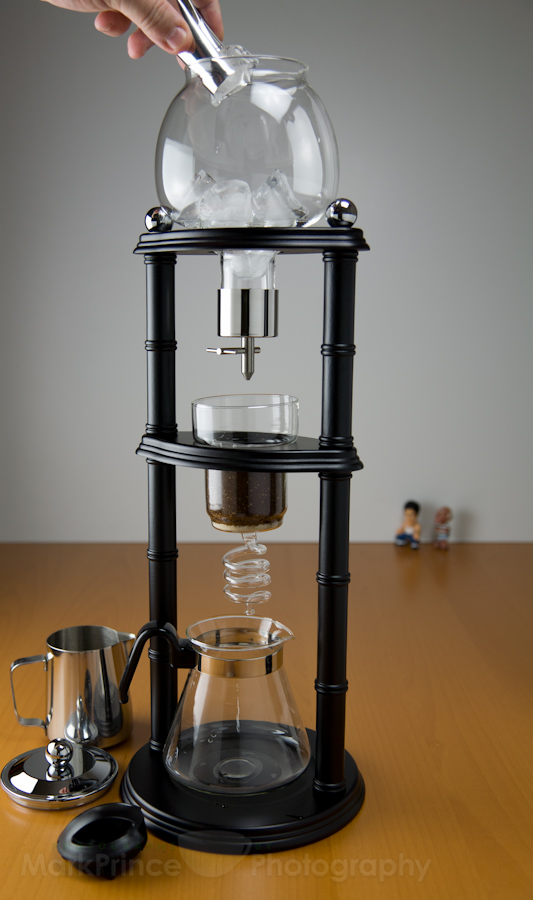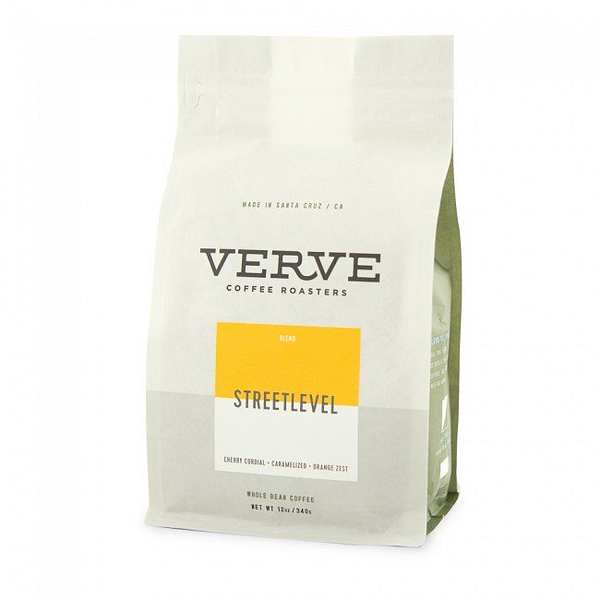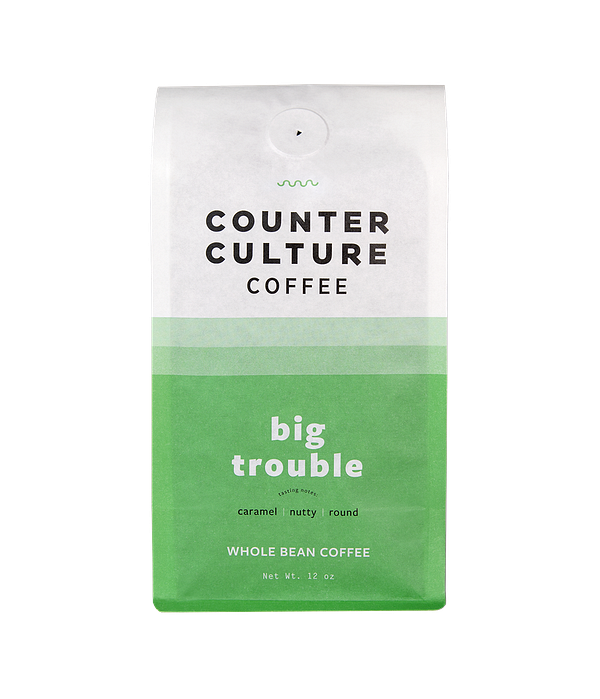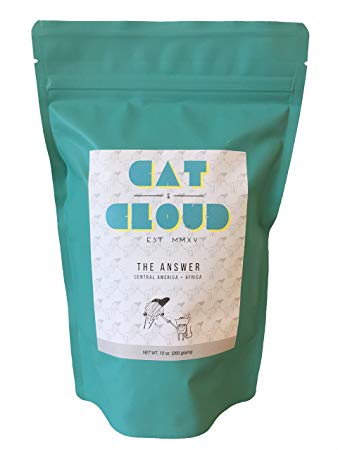
Kyoto Style Cold Brewing is a brewing method that makes the most flavorful and unique coffee experience today. The precision in this brewing process, along with the higher extraction rates compared to hot coffee, and lower bitterness make for a phenomenal experience. But just as intimidating as the Kyoto Towers may seem at first glance, making the perfect cup of coffee is just as difficult, so our goal is to shed light on the process.
We’ll be going over some of the differences in coffee sourcing and how to find the perfect coffee source for you, specifically one that will help you brew Kyoto Style Coffee. For starters, there are two main species of coffee beans known as robusta and arabica. Arabica is much higher quality and we will be referencing strictly this type of bean.
But first, why Kyoto Style Coffee?
- The coffee lasts for much longer periods of time than hot coffee. 2–3 weeks if refrigerated properly.
- Lower acidity, up to 70% less than hot coffee.
- Higher caffeine per volume. I.e. better bang for your buck.
- Easier to make in larger quantities, as long as you have the right equipment. This can save you 10–15 minutes from your morning routine — talk about efficiency!
- No bitterness if brewed properly, delicate flavors, and an incredible coffee experience.
- Kyoto Style Coffee towers are designed specifically to make Kyoto Style Coffee. We put together a list of the Top 5 Cold Drip Coffee Towers, so make sure to check them out.
Roast Level

The roast you choose will depend on your personal preference. Some baristas will strictly recommend darker roasts, while others have a preference for lighter roasts. Our palates are all different and flavors that your friends may taste, may not be as noticeable to you. For that reason, we recommend lots of experimentation to find what YOU like best. Not all coffee beans are created equal!
However, based on our experimentation of 100’s of roasts, we recommend medium-to-dark roasts, mainly espresso roasts for Kyoto Style Cold Brewing (also known as Japanese Style Iced Coffee, Dutch Coffee, Water Drip Coffee, LA Crack, etc.). These types of roast levels tend to have dominant flavor-notes of chocolate and earth, which pair well with the low acidity of Kyoto Style Cold Brew. If you generally enjoy your coffee with milk, start off with a darker roast as the high-notes that are generally nuanced in hot coffee will be much more noticeable with this brewing method. For the folks taking their coffee black, start off with a medium roast level.
Blends or Single Origin?

In the world of Third Wave Coffee, you will consistently hear these two terms: single-origin or blend. Single-origin means the coffees are sourced from a single farm or region, while a blend is sourced from more than one location. Generally speaking, the costs associated with single-origins are higher than blends as it’s more difficult to create a perfectly balanced cup of coffee using single-origins. This is similar to the wine world, where wines from a specific vineyard may be considered higher quality (and more expensive) than a wine that sources grapes from a larger region.
The purpose of coffee blends is to aim for consistency and reliability. By combining beans from multiple origins and regions, blends will have specific flavor characteristics that the roaster can consistently manipulate throughout the year. The blend recipe may change over time to compensate for changes in the seasonality of the beans. Since Kyoto coffee can cause flavors to blend together anyway, it is typically better to choose a blend. This is also because it is a more economical option.
Single-origins, on the other hand, are not only regional and farm-specific, but they also vary in flavors and consistency year-round. As the season changes, so do the types of coffee that can grow and the regions where farmers have sufficient crops. So while the same coffee plant may grow for 4 months of the year, the flavors will change depending on the month its harvested. This makes the life of the coffee farmers very difficult as they need to find different ways of making ends meet when their farms aren’t in season — more information on transparency and Direct-Trade farming in future blog posts.
Overall, single-origins are of higher quality and offer more complex flavors that the consumer may be able to characterize better than blends.
Refer to our other article How to Make Kyoto Coffee Better than Blue Bottle In Your Own Home where we dive deeper into our experimentation with blends and what we use in-house.
Recommended Roasters

VERVE — STREETLEVEL
Verve Coffee Roasters have locations in cities from Los Angeles and Japan but their home remains Santa Cruz, CA. Verve’s Streetlevel is roasted specifically for espresso but we found that it also brews great as Kyoto Style Coffee. Streetlevel is a coffee blend from Colombia and Honduras. You can expect this to be chocolatey with a deep and rich body, along with a sweet orange finish.
Colombia: Colombian coffees have a large range of flavors from heavier, chocolatier coffees, and they also produce sweet lots. A huge spectrum of flavors exists across the Colombian regions.
Honduras: A range of different flavors are found in Honduran coffees, the best often have a complex fruity quality and typically a juicier body.

COUNTER CULTURE | BIG TROUBLE
Counter Culture started in Durham, NC and later expanded to the West Coast in Emeryville, CA. Counter Culture is a specialty roaster with a commitment to fine coffee.
Counter Culture’s Big Trouble is a two-component blend from Peru and Nicaragua made to enjoy in different styles of brewing and also makes a delicious cup of Kyoto Coffee. It has the right balance of sweetness, almonds, and a subtle citrus finish.
Peru: Typically Peruvian coffees are clean, but a little soft. They tend to be sweet and have a relatively heavy body, but not as complex in flavor as other coffees we discuss.
Nicaragua: A range of flavors are found in Nicaraguan coffees. They are usually quite complex and capable of pleasing sweet flavors and have a clean level of acidity.

CAT AND CLOUD | The Answer
Cat and Cloud is a smaller specialty coffee roaster located in Capitola, CA and also neighbors with Santa Cruz’s Verve Coffee. Cat and Cloud’s blend “The Answer” is a three-component blend made up of Colombia, Brazil, and Ethiopia.
Colombia: Colombian coffees have a large range of flavors from heavier, chocolatier coffees, and also produce sweet lots. A huge spectrum of flavors exists across the Colombian regions.
Brazil: Higher-quality Brazilian coffees tend to be low in acidity, they have a heavy body and are often sweet and nutty.
Ethiopia: The flavors of Ethiopian coffees are notably diverse. They can range from citrus to bergamot to other tropical fruit flavors. Their best washed-coffees can be elegant and complex, while the best natural-processed coffees can be fruit-forward or have dried blueberry flavors.
We hope this gives you a jump start with choosing the right blends for you. If you made it this far through the article and would like to try our house-blend, you can contact us directly via email at info@dripdash.com and we will make a custom order for you to try. If you have any feedback with your trials, we’d love to hear from you!


